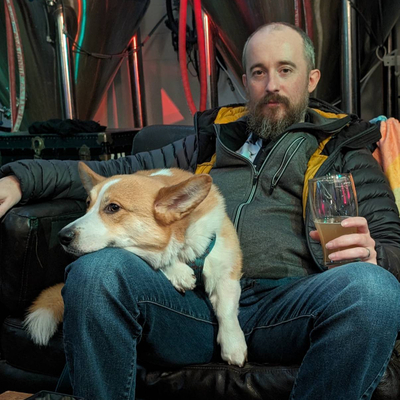Compared to your average home internet user I (and lets face it probably you, the reader) have a way more complicated home network than necessary;
- I don’t just have an ISP supplied router, I’ve got Omada network switches and routers and access points.
- I’ve got multiple small servers running network services like DNS or VPN tunnels.
I thought I’d been a good little IT professional and had ensured that my maintenance (unplanned or otherwise) wouldn’t affect my families Netflix or Paramount+ streaming by having not one but two synchronised Adguard Home powered DNS servers. I’d ensured both were communicated out via DHCP (or statically configured) as the primary and secondary DNS services so that no matter what I was doing no one would be stuck without working entertainment.
But then the RaspberryPi powered device died a death, and my network fell over1; because, as it turns out, not all devices do the sensible thing and what “secondary DNS server” actually means is “try this one after 30 seconds of hanging about”.
What I’m doing
Here’s the current portainer based docker-compose that I use for my DNS servers
adguard:
image: adguard/adguardhome
hostname: "adguard.myhome.lan" # it's not this, but could be
restart: unless-stopped
volumes:
- "adguard-config:/opt/adguardhome/conf"
- "adguard-work:/opt/adguardhome/work"
networks:
default:
ipv4_address: 172.20.0.3
vlan_serv:
ipv4_address: 10.5.0.17 #.33 on the other one
As you can see, I don’t make it super easy on myself and therefore use macvlan based networking to have the server sit on the network in my server VLAN2. I’ve got a almost identical stanza in another stack running on a different server to provide the two DNS services that we use.
Fixing it
The family was not amused at the downtime. Made much harder to diagnose by the RPi being headless.
If anyone has advice on recovering a BTRFS superblock from an LVM I'd appreciate it.
When I grumbled on Mastodon about the issue the general consensus appeared to be “implementation, and therefore mileage, may vary” and that I should probably look into something called keepalived. A lot of the blogs I came across had all these really over architected solutions that I couldn’t be bothered with so I’ve gone the bare minimum easy route, and it appears to work just fine.
Added to the same stacks as the Adguard instances are the additional keepalived services (one for each of the Adguard services)
keepalived:
image: shawly/keepalived:2
restart: unless-stopped
environment:
TZ: Europe/London
KEEPALIVED_CUSTOM_CONFIG: true
network_mode: service:adguard # this is the clever bit
cap_add:
- NET_ADMIN
- NET_BROADCAST
volumes:
- "keepalived-config:/etc/keepalived:ro"
The important point to note here is that the network_mode has been set such that the keepalived instance will live in the same network namespace as the Adguard instance they’re paired with - a bit like a k8s pod or sidecar.
And in the named volumes you’re going to want to add an appropriate configuration file
# primary instance
# keepalived-config/keepalived.conf
vrrp_instance VI_1 {
state MASTER
interface eth0 # may need to alter this
virtual_router_id 51
priority 200
advert_int 1
authentication {
auth_type PASS
auth_pass 1111
}
virtual_ipaddress {
10.5.0.10
}
}
# secondary instance
# keepalived-config/keepalived.conf
vrrp_instance VI_1 {
state BACKUP # this one is the backup
interface eth0 # may need to alter this
virtual_router_id 51
priority 100 # notice the lower priority
advert_int 1
authentication {
auth_type PASS
auth_pass 1111
}
virtual_ipaddress {
10.5.0.10
}
}
When you bring up your newly altered stacks you should have something similar to this in the logs for the keepalived containers.
# primary instance logs
(VI_1) Entering BACKUP STATE (init)
(VI_1) received lower priority (100) advert from 10.5.0.33 - discarding
#...
(VI_1) Receive advertisement timeout
(VI_1) Entering MASTER STATE
(VI_1) setting VIPs.
(VI_1) Sending/queueing gratuitous ARPs on eth0 for 10.5.0.10
#...
# secondary instance logs
(VI_1) Entering BACKUP STATE (init)
(VI_1) Backup received priority 0 advertisement
(VI_1) Receive advertisement timeout
(VI_1) Entering MASTER STATE
(VI_1) setting VIPs.
(VI_1) Sending/queueing gratuitous ARPs on eth1 for 10.5.0.10
#...
(VI_1) Master received advert from 10.5.0.17 with higher priority 200, ours 100
(VI_1) Entering BACKUP STATE
(VI_1) removing VIPs.
As you can see above each of my keepalived instances has figured out what they should be doing. If I stop the master instance the backup starts advertising the VIP almost immediately.
All this means I can now point all my devices (via DHCP) to my 10.5.0.10 virtual IP and no matter what odd behaviour any given device has I’ve taken that particular responsibility away from it.
Wait, what’s just happened
I’ve successfully setup a VRRP based virtual IP that will always, through the magic of election algorithms, point at a working DNS service. I’ve completely sidestepped the issue of what a device does with it’s secondary DNS service by never actually needing it.
Just for funsies lets do a quick test.
$ dig @10.5.0.10 kagi.com
; <<>> DiG 9.10.6 <<>> @10.5.0.10 kagi.com
; (1 server found)
;; global options: +cmd
;; Got answer:
;; ->>HEADER<<- opcode: QUERY, status: NOERROR, id: 36658
;; flags: qr rd ra; QUERY: 1, ANSWER: 1, AUTHORITY: 0, ADDITIONAL: 1
;; OPT PSEUDOSECTION:
; EDNS: version: 0, flags:; udp: 4096
;; QUESTION SECTION:
;kagi.com. IN A
;; ANSWER SECTION:
kagi.com. 149 IN A 34.111.242.115
;; Query time: 42 msec
;; SERVER: 10.5.0.10#53(10.5.0.10)
;; WHEN: Thu May 30 17:19:20 BST 2024
;; MSG SIZE rcvd: 53
Which server did it query? I don’t know. I’m not sure I care. What I do know is that I can shut down either of my two portainer hosts and the TV/iPad continues to function without me be grumbled at.



Comments